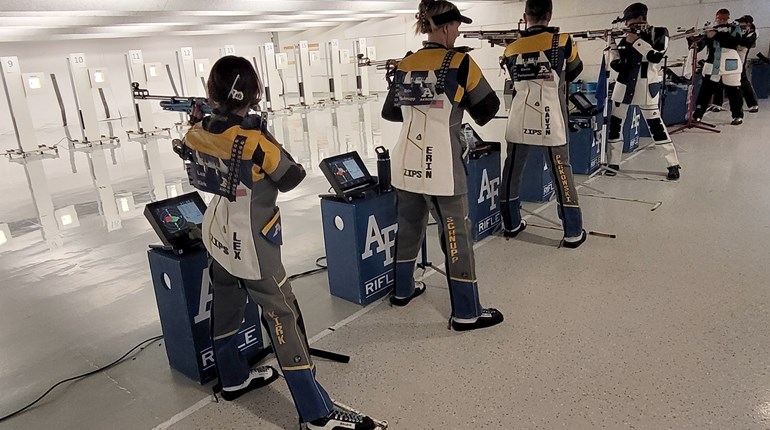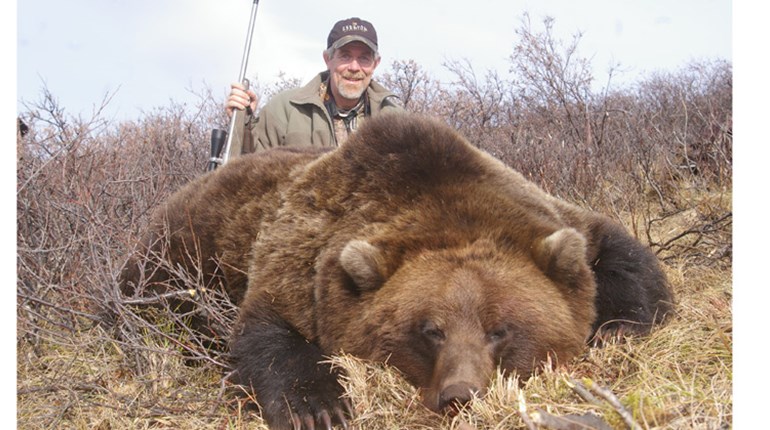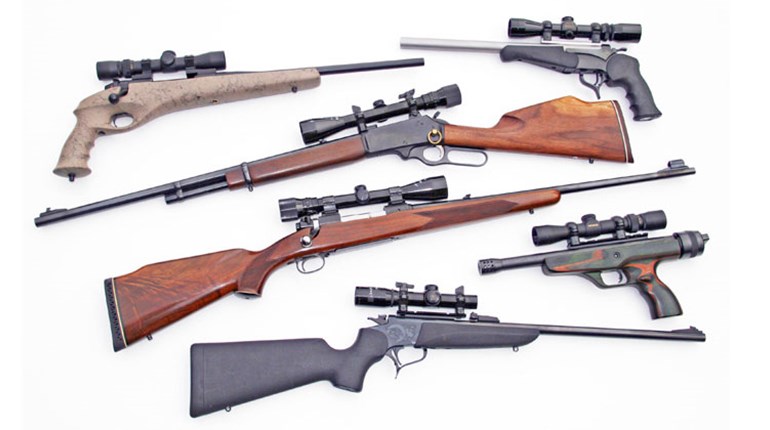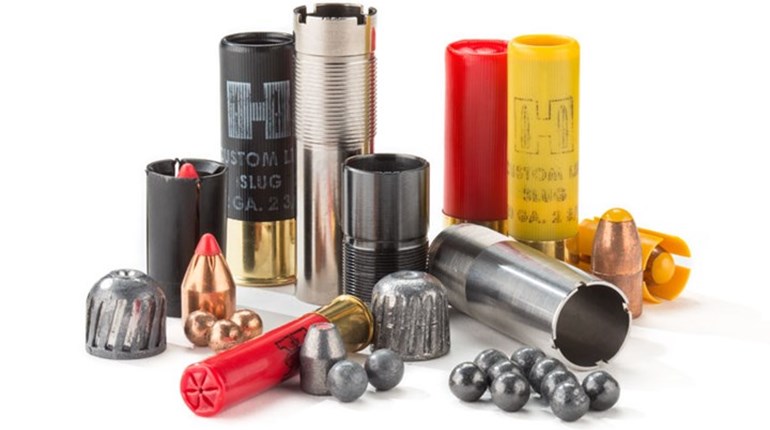
I focused my binocular on the brown outlines silhouetted on a distant ridge and spotted antlers. My guide, Tony Bohrer with Ivory Tip Outfitters, had stopped near a steep draw where we bushwhacked a short distance to glass country that was hard to get a look at without knowing the terrain. Tony told me one of his hunters, just weeks earlier, had shot a huge buck scoring just shy of 200 inches off the far ridge. It conjured up images of a monster muley wearing my tag by the end of the hunt. Our vantage point was ideal and quickly showed us the big bucks weren’t in that drainage that day.
Ivory Tip has some unique hunting grounds in northwest Colorado, where mule deer and elk migrate out of the high country to wintering habitat at lower elevations. Depending on the weather, the critters can come in a steady stream or can flood the basins and valleys. Being smack-dab in the middle of the historic migration route means the deer hunting is good from September through December, and every day brings new critters to the mix. The big boys can show up without notice, and the only thing a hunter must do is be there on the right day.
I had arrived in Craig, Colo., the day before, toured the town and got a bite to eat just to see the incredible reception the community throws to hunters. There are banners everywhere welcoming hunters, and discounts are promoted for food, and even beer, for those sporting blaze orange. It is a welcome sight in today’s world, and worth soaking in when in the area.
We were up early to check the weather, don the proper layers of clothing, enjoy a hot breakfast and head for the hills. With several hunters in camp, there were people heading in different directions. The hunt area for Ivory Tip is so immense that the only time we saw each other was when we got back together in camp. I felt fortunate to be hunting with Tony, and he had his big Dodge truck fired up to cut the industrial-strength frost off the windshield with the extreme cold that had settled into the region.
As I found out, there is a ritual of events when hunting with Tony. He makes two extra pots of coffee each morning and fills a huge thermos to take in the truck. I love coffee, but was starting to worry I might ingest too much caffeine and shake so bad I wouldn’t be able to steady my rifle when my big buck stepped into view. The other given when hunting with Tony, who is also a local preacher, is having the satellite radio in his truck tuned to classic country. The hits from the 1940s and ’50s were what he remembered most when heading into the field with his grandpa as a kid. It was a ritual I was starting to like, making me feel like I was part of the Bohrer clan.
With twanging tunes playing in the background and a travel mug filled to the rim with fresh java, we headed to a road that would take us up into the steep country. We didn’t even get out of the driveway before spotting the first herd of deer. In the pale morning light, they were working their way off a field, back toward cover. Tony made a point of stopping to glass every deer we spotted. He said a new buck could show up at any time, and he never took for granted he knew every deer, in every field. We didn’t have to travel far before finding more bucks. Distant hills were examined with Leupold binoculars to reveal the moving targets. Spotting scopes were used when antlers needed to be scrutinized. The wintry weather had the deer on the move and we caught them roving through the aspens, or quakies, in a line that would eventually take them to the huge expanses of sage pastures and rich winter forage. Tony knew every nook and cranny in the landscape where deer like to hide or hang out. We stopped to set up the spotting scope regularly, and walk into areas of open vistas and landscapes that could only be seen from specific locations.
We had hunted hard all day and the frigid temperatures tested our Browning clothing and resolve to be outdoors. Winding down the mountain, listening to Patsy Cline serenade us, the biggest buck of the day came into sight. The rut was obviously still in progress, even though we were hunting in December, as the buck was actively courting a small harem of does. Two smaller bucks hovered around the periphery, and we glassed the wide antlers carefully. The buck tempted us, but Tony insisted it was only day one, and we would be able to locate the same deer in the morning if we wanted to have another look. We had seen more than 60 bucks that day, including several that tempted me to close my tag early. A huge buck with three long, sweeping points on each antler was by far the most mature but lacked the extra points to make him a classic.
Camp buzzed with stories of big deer, close encounters and hopeful dreams for the next morning. Nobody had filled a tag, even though some mature Colorado mountain mule deer bucks generated an itchy trigger finger or two.
The next morning found Tony and me carefully propping the monster thermos of brew in its spot on the back seat. The radio was tuned, and volume set to hear the music clearly but still enable us to communicate. As the horizon started to brighten, we found deer. Small bucks were common, and the 10-degree temperature had a picturesque layer of hoar frost on everything. We worked our way back to the area where we spotted the wide buck the night before and located him with another tall 4x4 buck we hadn’t seen the previous day. We looked over the deer again, and Tony insisted we could do better with three days of hunting left.
We wandered over the hill and were momentarily sidetracked when we spotted a herd of 300 or so elk. We glassed numerous bulls, and I wished out loud I had an elk tag in my pocket. We sat on our elevated spot and used the height advantage to glass huge expanses of sagebrush. There was a ridiculous number of deer hiding in the foliage and undulating terrain, allowing them to remain undetected when they weren’t moving. After glassing dozens of bucks, we headed back toward the road we used the day before to take us to the high country. We got close to the area where the wide buck was the night before and first thing in the morning when we spotted a group of mule deer. I thought we’d be looking at the same deer once again, but as soon as we put glass on antlers, we noticed a new buck had moved into the same draw. Just as the preacher had predicted, several bucks had shown up without notice, emphasizing the need to glass every deer, every time you see one.
This buck had it all. He was incredibly tall, and his front forks splayed out to be wider than his top forks. I’m not sure if I said I had wanted the buck before Tony told me I should try to take him, but it didn’t matter, as we were soon stalking our way through the sage to close the distance to the dark, hulking body that stood out in the herd.
Tony was carrying a set of shooting sticks, as much of the sage was so tall you had to stand to see and shoot your target. We worked our way down a ridge, and inadvertently bumped more deer to our left. They darted over the hill and, thank goodness, away from the buck we were stalking. Inching forward one step at a time, I forgot all about the cold winds that felt like ice crystals piercing my face. We edged up behind a large sage and spotted the buck meandering the dry creek bed below. Tony reiterated the buck we wanted was on the right, and I had no problem distinguishing him from his buddy. I settled my Browning X-Bolt in .300 Win. Mag. on the shooting sticks and found the buck in the scope. Tony ranged the deer at 240 yards, with adjustment for angle, and I dialed the turret on my scope to shoot the exact distance. I looked up momentarily and chuckled, and said the modern technology from Leupold should be called “dial-a-buck.”
I tracked the deer with my crosshair as he quartered away from me. As the terrain changed to a steeper angle, the deer was forced to turn broadside and stopped. I slowly tightened up on the trigger until I heard the resounding boom from my rifle. The unmistakable sound of the bullet finding its mark echoed back towards us off the steep hills. The buck fell on his nose and never took another step.
I was more than elated. This was the biggest mule buck I had taken in well over a decade, and one of my best of all time. I simply ranged the animal, dialed the distance on the turret and made one perfectly placed shot on a large mule deer buck.
Tony and I sported big grins as we lifted antlers and admired the Colorado monarch. We field-dressed the deer, hauled it out of the ravine and celebrated with a hot cup of coffee.





































